Federal and State Listed Species of Texas:
Neches River rose-mallow
Global Location
Known only from Cherokee, Harrison, Houston, and Trinity counties in Texas.
null
Credit:
Description
Neches River rose-mallow is a non-woody perennial. The 2.5 meter tall stems are hairless and greenish to reddish-green. The hairless leaves are triangular-egg-shaped in outline, 5-12 cm long, and 1-14 cm wide. The leaves have three thin lobes (2-8mm wide) with parallel sides, and which taper to a point. The middle lobe is longer than and somewhat perpendicular to the side lobes. There are two sets of hairy leaf-like appendages below the flower. The first set (the sepals) is fused into a cup or tube just below the petals. The second set (the bracts) attach below the sepals. These 8-14 bracts are linear and 1.8-2.2 cm long. The flowers are creamy white with a deep red base and are 4.5-7 cm long. At maturity, the 1.6-2.8 cm long fruit is enclosed within the sepals.
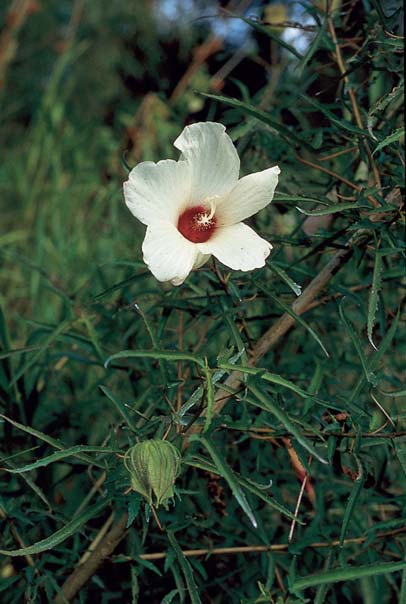
Neches River rose-mallow has 2.5 meter tall stems and creamy white flowers with a deep red base
Credit: Jackie Poole - Texas Parks & Wildlife Dept.
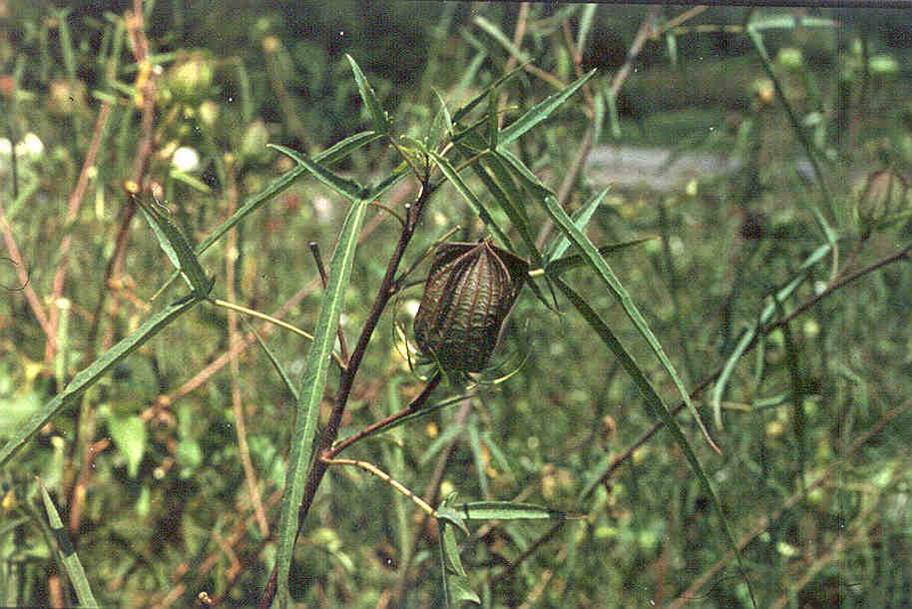
Neches River rose-mallow has hairless T-shaped leaves with narrow lobes.
Credit: Jackie Poole - Texas Parks & Wildlife Dept.
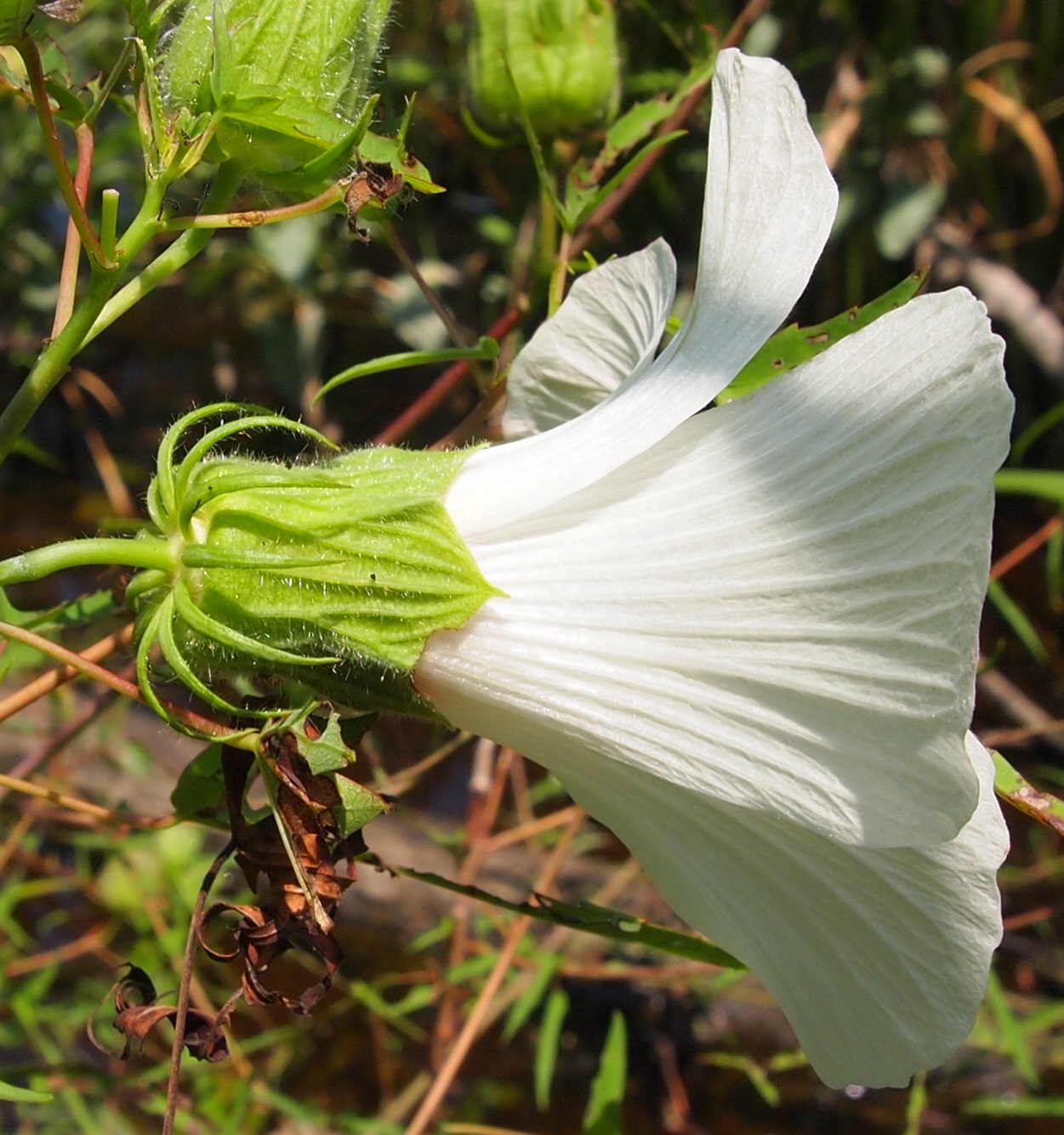
Neches River rose-mallow has hairy bracts and sepals. The bracts have some erect hairs.
Credit: Anna Strong - Texas Parks & Wildlife Dept.
Similar Species
The native soldier rose-mallow (Hibiscus laevis) and woolly rose-mallow (Hibiscus moscheutos) are common throughout East Texas and can appear similar to Neches River rose-mallow. However, Neches River rose-mallow is distinct with its hairless T-shaped leaves, narrow leaf lobes, and hairy bracts and sepals. Whereas, soldier rose-mallow has essentially hairless leaves, bracts, and sepals, and three broad leaf lobes (8-50 mm wide) and wooly rose-mallow has hairy oval-shaped leaves, absent (or broad) leaf lobes, and woolly bracts and sepals. Although both Neches River rose-mallow and woolly rose-mallow have hairs on their bracts and sepals, Neches River rose-mallow bracts have at least some erect hairs and woolly rose-mallow has a velvety mat of hairs on their bracts and sepals.
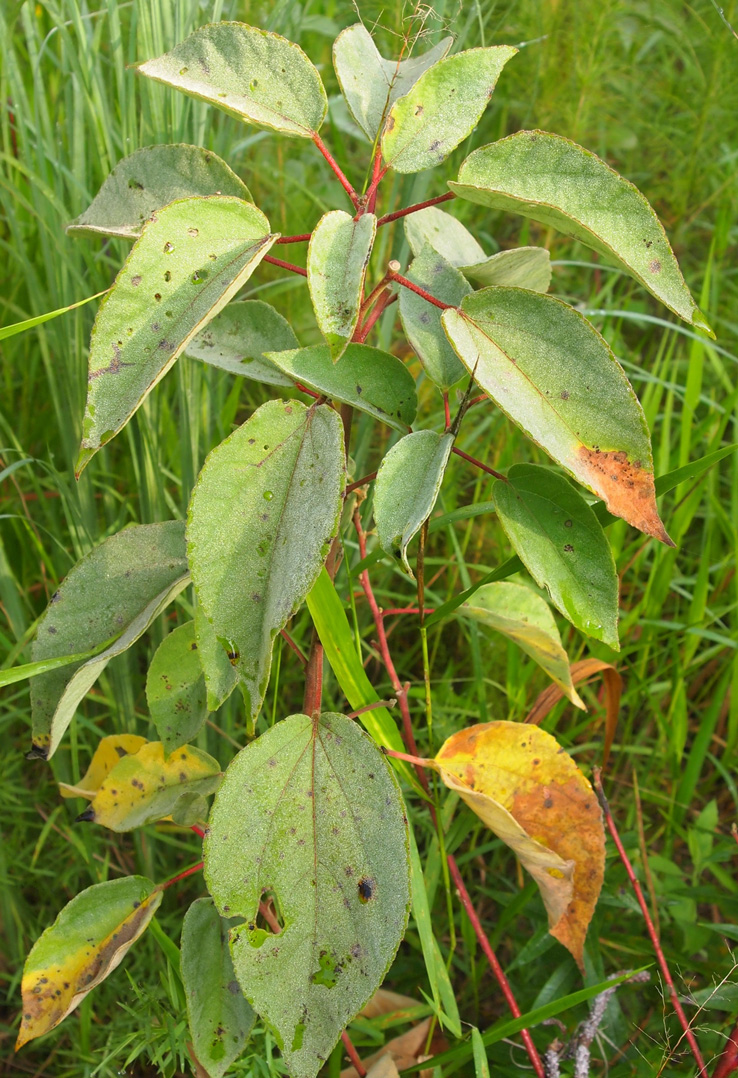
Woolly rose-mallow has hairy, oval-shaped leaves with very broad or no leaf lobes.
Credit: Anna Strong - Texas Parks & Wildlife Dept.
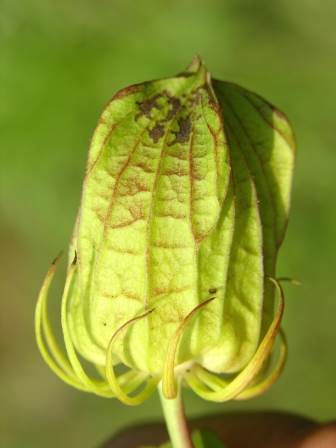
Soldier rose-mallow has essentially hairless bracts and sepals. A few hairs can be present.
Credit: Jackie Poole - Texas Parks & Wildlife Dept.
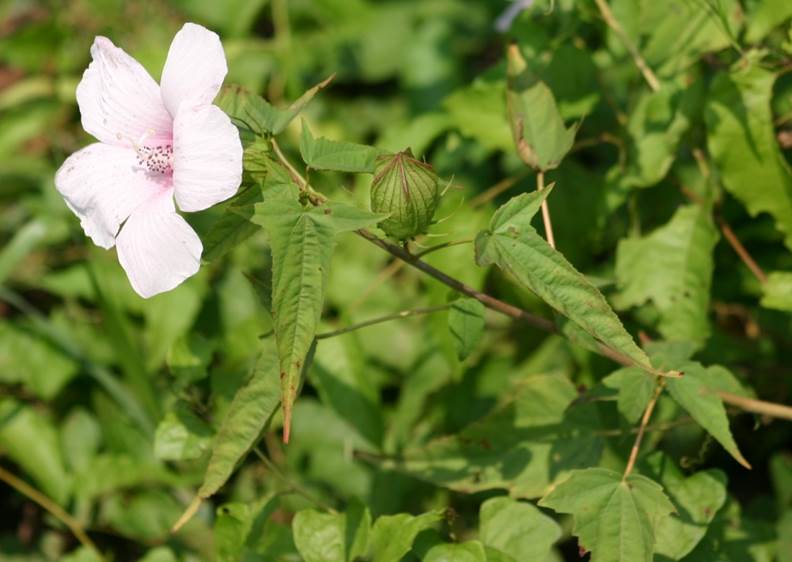
Soldier rose-mallow has essentially hairless leaves with three broad leaf lobes.
Credit: Cullen Hanks - Texas Parks & Wildlife Dept.
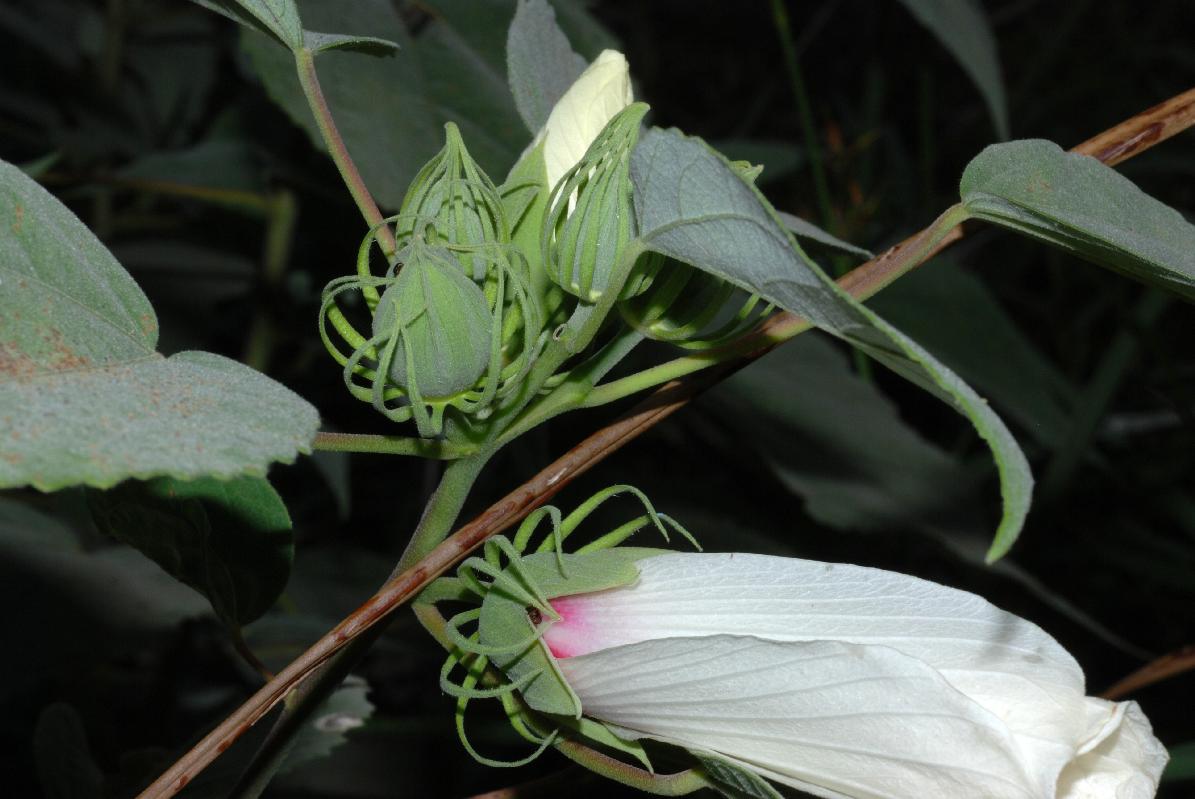
Woolly rose-mallow has woolly bracts and sepals. The hairs are matted and intertwined.
Credit: James Van Kley - Stephen F. Austin State University
null
Credit:
null
Credit:
Floral Characters
nullLeaf Characters
nullnull
Credit:
null
Credit:
null
Credit:
Habitat
Neches River rose-mallow occurs at the edge of woodlands in open marshy habitats found in sloughs, oxbows, river terraces and sand bars. Despite its name, it has not been found along the Neches River. Instead, it prefers soils near standing water, which are inundated during the wet months of the winter and spring, but dry up at the surface during the summer.
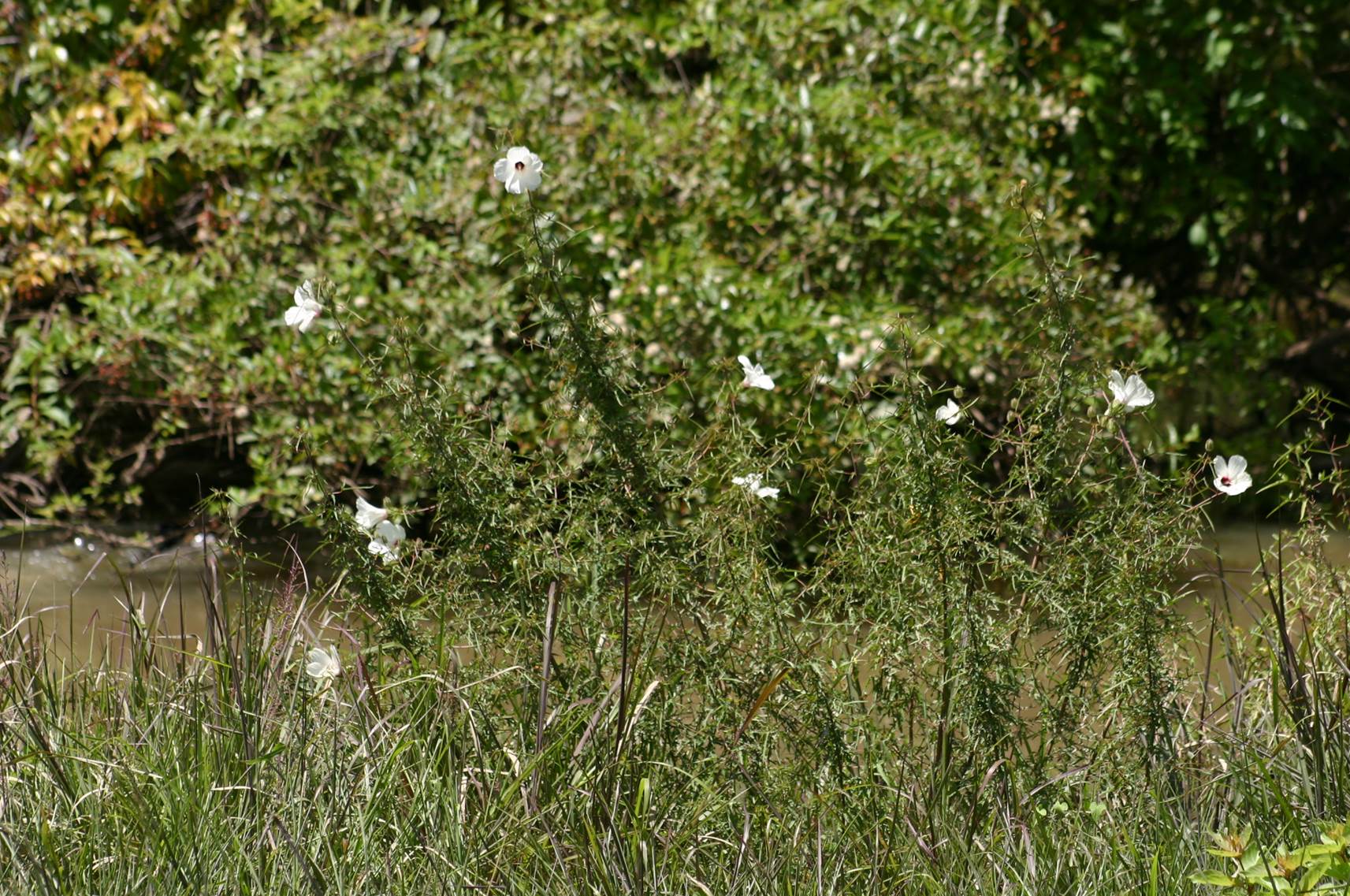
Neches River rose-mallow occurs at the edge of woodlands in intermittently inundated soils of marshy habitats (sloughs, oxbows, river terraces, and sand bars).
Credit: Cullen Hanks - Texas Parks & Wildlife Dept.
Life Cycle Events
Flowering occurs from June to August.
Survey Season
As an herbaceous perennial, Neches River rose-mallow dies back in the fall when the leaves drop leaving a bare brown stem. New stems re-emerge from the base of the dead stems the following spring. The plant is most easily detected when in flower June to August.
Citations
- Norrell-Tober, J. 2017. Differentiating the Neches River Rose Mallow (Hibiscus dasycalyx) from its congeners by means of phylogenetic and population genetics. Master's Thesis, University of Texas at Tyler.
- Klips, R.A. 1995. Genetic affinity of the rare eastern Texas endemic Hibiscus dasycalyx; (Malvaceae). American Journal of Botany 82: 1463-1472.
- Mendoza, E. A. 2004. Genetic diversity within Hibiscus dasycalyx, Hibiscus leavis and Hibiscus moscheutos utilizing ISSR techniques. Master's Thesis, Stephen F. Austin State University, Nacogdoches, TX.
- Small, R.L. 2004. Phylogeny of Hibiscus sect. Muenchhusia (Malvaceae) based on chloroplast rpL16 and ndhF, and nuclear ITS and GBSSI sequences. Systematic Botany 29: 385-392.
- Wise, D. and M. Menzel. 1971. Genetic affinities of the North American species of Hibiscus sect. Trionum. Brittonia 23: 425-437.
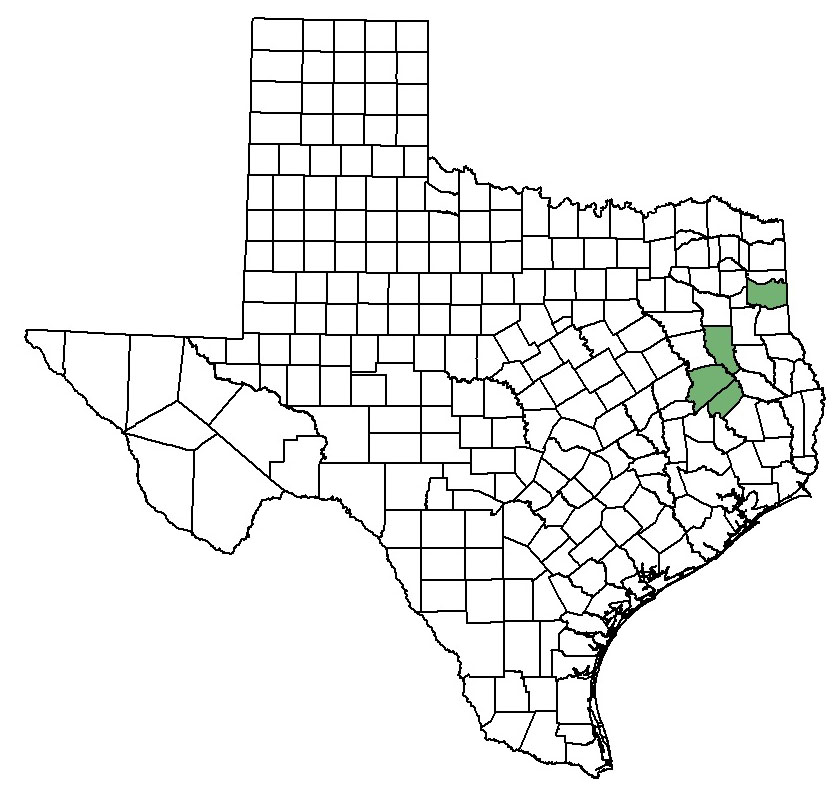
Comments
Neches River rose-mallow grows near and has the potential to hybridize with both soldier and woolly rose-mallow. Some plants in the field have shown similarities to both Neches River rose-mallow and either soldier or woolly rose-mallow. One study has shown that crosses between soldier and woolly rose-mallow did not produce seed (woolly mom crossed with soldier dad) or did not produce vigorous seed, which when they were germinated they did not grow to maturity (soldier mom crossed with woolly dad) (Wise and Menzel 1971). Limited studies have been conducted showing that Neches River rose-mallow hybridizes with other rose-mallows (Klips 1995). Although previously debated, several studies have shown that it is a distinct species (Klips 1995, Mendoza 2004, Small 2004, Norrell-Tober 2017).